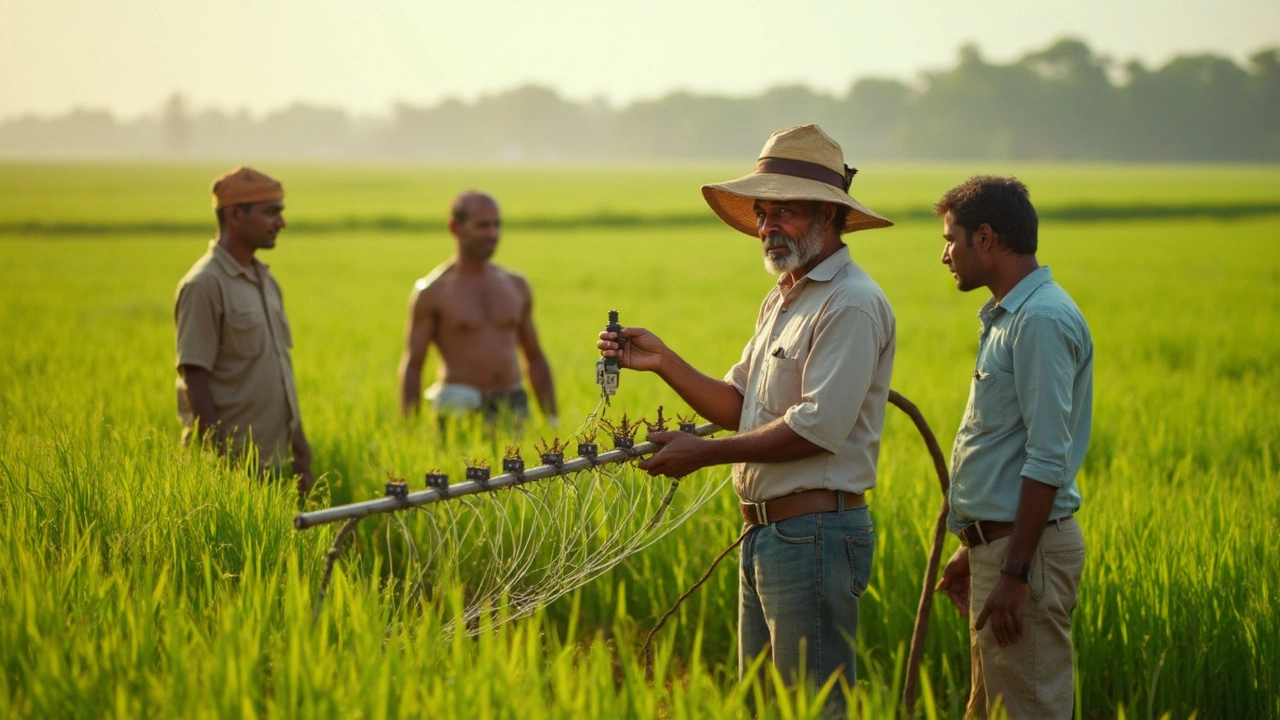Most farmers still shy away from drip irrigation despite its efficiency. This article delves into the challenges and difficulties farmers face with adopting this water-saving technique. From understanding initial costs to the nuances of installation, get insights into why drip irrigation remains underutilized in agriculture.
Agricultural Innovation: Smart Tools, Local Solutions, and Real Results for Indian Farms
When we talk about agricultural innovation, practical, on-the-ground improvements that make farming easier, cheaper, and more productive. Also known as smart farming, it's not about fancy robots or satellite images—it's about fixing what’s broken in your field or balcony garden with what you already have access to. In India, where water is scarce, soil is heavy, and monsoons come fast, innovation means learning how to stop wasting water, how to make clay soil work like loam, and which plants actually survive without constant care.
Take drip irrigation, a system that delivers water straight to plant roots, drop by drop. It’s one of the most common agricultural innovation tools used by small farmers, but most people don’t know why their emitters clog or how to clean them. Or look at soil amendments, materials like compost, perlite, or leaf mold added to improve soil structure. You don’t need to buy expensive bags—many Indian gardeners use kitchen scraps, cow dung, or even crushed dry leaves to turn dense soil into something plants can breathe in. These aren’t theories. They’re fixes tested in Punjab fields, Tamil Nadu balconies, and Maharashtra kitchen gardens.
And then there’s the quiet revolution in plant choice. organic gardening, growing food without synthetic chemicals, using nature’s own systems isn’t a trend—it’s survival. In India, where chemical inputs cost more every year, farmers are going back to native plants that bloom all year, like jasmine or pomegranate, and using companion planting to keep rabbits away from zinnias without pesticides. This is innovation that doesn’t need a patent. It just needs someone to try it.
What you’ll find below isn’t a list of gadgets. It’s a collection of real fixes: how to stop overwatering your balcony herbs, why rice can’t regrow on its own, how to fix a broken drip line with a toothpick, and which soil mix actually works in Indian clay. These aren’t ideas from a university lab. They’re the kind of tips passed between neighbors, shared on WhatsApp groups, and learned the hard way after a season of failed crops. If you’ve ever stared at dry soil, clogged emitters, or wilting plants wondering what to do next—this is where you start.
